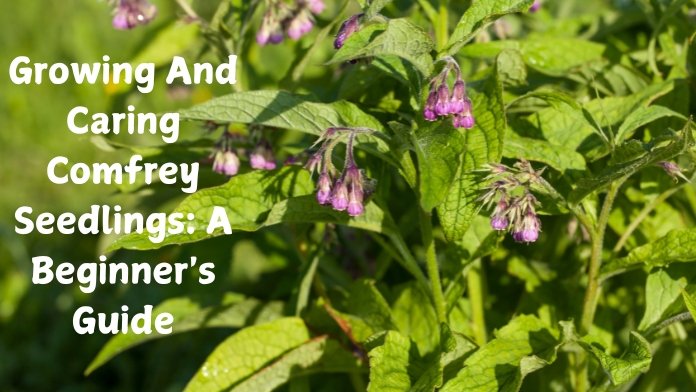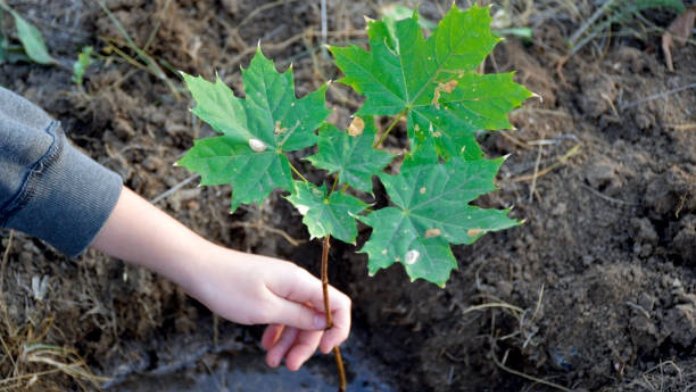
An elm seedling is the young initial stage in the life of an elm tree. However, all elm trees begin their journey as tiny elm seedlings. Whether you’re planting American or Chinese elm seedlings, understanding how to care for these young plants is crucial for their success.
In this comprehensive guide, we’ll walk you through everything you need to know about elm seedlings, including the best care practices, how to plant them, and what to do if you need to know how to get rid of elm tree seedlings. If you want to grow healthy elm trees, this article is for you.
What is an Elm Seedling?
It’s the sprouting of a seed that eventually grows into a mature elm tree. Elm seedlings can come from different varieties, such as American or Chinese elm seedlings, and are the building blocks for these majestic trees.
These young plants are delicate and require the proper care and environment to thrive. While all elm trees share some everyday growth habits, each variety (such as Chinese elm and American elm) has unique needs.
Types of Elm Seedlings
There are several varieties of elm seedlings that you might encounter, each with distinct characteristics:
Chinese Elm Seedling
The Chinese elm (Ulmus parvifolia) is a hardy tree native to China and Taiwan. It’s popular in urban environments because it can withstand growing conditions. The Chinese elm seedling grows rapidly and is well-suited for those looking for a low-maintenance tree. It’s also known for its beautiful exfoliating bark, which adds an aesthetic appeal to any landscape.
American Elm Seedlings
The American elm (Ulmus americana) is a native North American species known for its elegant shape and wide-spreading canopy. American elm seedlings are sought after for their height and the shade they provide once mature. However, it’s important to note that American elm trees have been significantly affected by Dutch elm disease, a fungal infection spread by elm bark beetles.
How Do Elm Seedlings Grow?
Elm tree seedlings begin their life from an elm seed. These seeds are often winged, which allows them to be dispersed by wind. Once the seeds land in the right environment, they begin to germinate, and the seedlings emerge, initially growing with tender stems and small leaves.
The Germination Process
-
Seed Collection: Elm seeds are collected in late summer or early fall, depending on the species.
-
Cold Stratification: To ensure proper germination, elm seeds often need to go through a cold stratification process, where the seeds are exposed to cold temperatures for a few weeks.
-
Planting and Germination: The seeds can be planted in containers or directly in the soil after stratification. Within weeks, the elm seedlings begin to sprout.
How to Care for Elm Tree Seedlings
Understanding how to care for elm tree seedlings is essential for successful growth. Like any young plant, elm seedlings require special attention during their early stages.
Watering and Moisture
Water your elm seedling deeply, but avoid overwatering. Elm seedlings need moisture to grow, but too much water can drown the roots and hinder their development. Maintain a consistent watering schedule, especially during the dry summer months.
Sunlight
Whether American or Chinese elm seedlings, elm seedlings thrive best in full sunlight. Ensure your seedling gets at least 6 hours of direct sunlight daily.
Soil Conditions
Elm trees grow best in loamy, well-drained soil. Add organic compost or mulch to retain moisture and give the seedlings the necessary nutrients.
Protection from Pests and Diseases
Be aware of pests like the elm beetle, which can damage trees and seedlings. Regularly check your elm seedlings for signs of pests or disease, such as yellowing leaves or wilting.
How to Plant Elm Tree Seedlings
Planting your elm tree seedlings in the right environment ensures they will thrive. Here’s how to properly plant elm seedlings:
Choose the Right Location
Select a spot that offers full sun and well-drained soil. Elm seedlings need space to grow, so avoid planting them too close to other trees or structures.
Dig a Proper Hole
Dig a hole about twice the size of the root ball of your elm seedling. This will allow the roots to spread and establish a solid foundation.
Planting Depth
Ensure the elm seedling is planted at the same depth it was in the container. Planting too deep can suffocate the roots, while planting too shallow may expose the roots.
Watering After Planting
Water your elm seedling thoroughly after planting to ensure the roots are settled. Keep the soil consistently moist during the first year of growth.
How to Get Rid of Elm Tree Seedlings
If you’re dealing with too many elm tree seedlings sprouting up in your garden or yard, you might want to know how to get rid of elm tree seedlings. Here are some strategies:
Hand-Pulling
Hand-pulling the seedlings can be effective for small areas. Ensure you obliterate the roots to prevent regrowth.
Using Herbicides
You can use herbicides designed to kill young tree seedlings. Be cautious when using chemical treatments, as they can affect surrounding plants.
Smothering with Mulch
Covering unwanted elm tree seedlings with a thick layer of mulch can prevent sunlight from reaching them, eventually killing them off.
Potential Challenges with Elm Seedlings
While elm seedlings are relatively easy to grow, they do come with specific challenges:
Dutch Elm Disease
Dutch elm disease is the most significant threat to American elm seedlings. It is caused by a fungus and is transmitted by beetles. Early detection and proper care can help manage this disease.
Pests
Insects like the elm beetle can affect the health of your seedlings. Be vigilant and use pest management strategies as needed.
Watering Issues
Too much water or too little can harm elm seedlings. Ensure the soil is moist but not waterlogged.
Conclusion
Whether you’re growing Chinese or American elm seedlings, these trees offer both beauty and benefits to your landscape. By understanding the care requirements, planting process, and potential challenges, you can ensure your elm seedlings grow into mature, healthy trees. With the proper attention, your elm tree seedlings can thrive and provide shade and beauty for generations.
FAQ
How long does it take for elm seedlings to grow into trees?
Depending on the species and growing conditions, it can take elm seedlings 10 to 20 years to mature into full-grown trees.
How can I prevent Dutch elm disease in my elm seedlings?
Preventative measures include choosing disease-resistant varieties, removing infected trees, and controlling beetle populations.
Can I plant elm seedlings in containers?
You can plant elm tree seedlings in containers, but they will eventually need to be transplanted into the ground as they grow.
RELATED POSTS
View all


